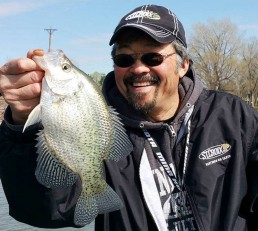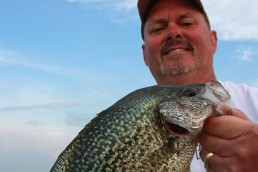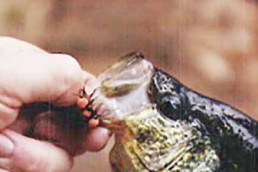Catching Big Crappies in the Brush
SHARE THIS POST
Knock on wood when it comes to finding crappies all across the country. Brush piles and fallen shoreline trees are favorite targets of many of the top crappie anglers.
Early in the year and again in fall, you can follow crappies into the many feeder creeks and rivers that empty into reservoirs down south or in the bays in natural lakes up north.
Early season crappies are looking for a place to spawn in addition to following the forage into the warmer water. They move to deeper water in the main lake as the water warms. But wood remains a fish magnet, though the depth may change and feeding windows may differ. Fish can be taken from wood all day in spring, but early morning is often best during the hot months.
St. Croix has just introduced a superb series of rods specifically designed for panfish. They come in various lengths from 5 feet for shooting to 11 feet for dipping or “spider rigging.” Try casting small jigs to brush piles or use the longer rods for slip bobbers. The shorter rods are perfect for “shooting” small jigs under boat docks, the next most-popular cover for crappies on reservoirs.
Brush piles form naturally wherever a bend occurs in the creeks or near the old river channel. Scouting with Humminbird’s side imaging and GPS can quickly identify several good spots to try.
Many fishing clubs and park districts sink their own cover. Ask at park offices or Fish and Game departments for maps.
Where legal, you can also try sinking your own trees. (Make sure you check out local regulations.) Simply weight them with a rock and duct tape. Duct tape is a great invention as it truly holds the world together. Just place a good-sized rock next to the base of several limbs and use the duct tape to wrap everything together.
During the early season, try the trees located at shallow depths of three to five feet. As the season progresses, you can go deeper from 8 to 10 feet. Super deep brush piles with small jigs just take too long. Cast 1/32-ounce hair jigs or tip the jig with small plastic minnow imitating tails. Let them fall a little and retrieve. If nothing, let the jig fall a little more with each cast until a fish crappie takes the hook or the jig touches the top of the brush.
Are you enjoying this post?
You can be among the first to get the latest info on where to go, what to use and how to use it!
If you are still zeroed after 10 minutes, head to the next brush pile. The goal is to plot a milk run of brush piles that are producing, then travel from one to another and so on before going back to the first and repeating the process. It’s a run-and-gun technique when looking for active fish. You’ll know right away when you’ve found them.
When more finesse tactics are needed, use snag-less jigs with tiny weed guards in order to pluck crappies hidden deeper in the tree.
If fish are on shoreline timber, try a super small 1/64-ounce jig under a float and cast the rig to the open pockets of shallow trees.
Keep your color choices simple. White, chartreuse, or a combination of both will work most of the time.
We didn’t mention live bait, as most purists wouldn’t use live bait. But, a small minnow tipped on a tiny jig under a bobber can pull nice crappies out when artificial ones won’t work.
We love fishing for crappies because they simply taste great. When cleaning these tasty morsels, you might want to try out a new invention called the Skinzit, electric fish skinner. This innovative device takes the rib bones out and skins the fish in seconds with little or no waste. Check it out at fishskinner.com. You’ve got to see it to believe it.
But, be aware, even though crappies are panfish, their numbers can be depleted. Selective harvest is still a necessary tool to insure healthy populations in the future. Take only enough for a meal.
MWO
SHARE THIS POST
Did you enjoy this post?
You can be among the first to get the latest info on where to go, what to use and how to use it!
Ted Takasaki
Ted Takasaki is an International Fishing Hall of Fame professional angler who has been featured in many national outdoor magazines and television shows. Takasaki has appeared in front of thousands of angling enthusiasts and is considered one of America’s top walleye and multispecies anglers. Follow him on his Facebook page.



